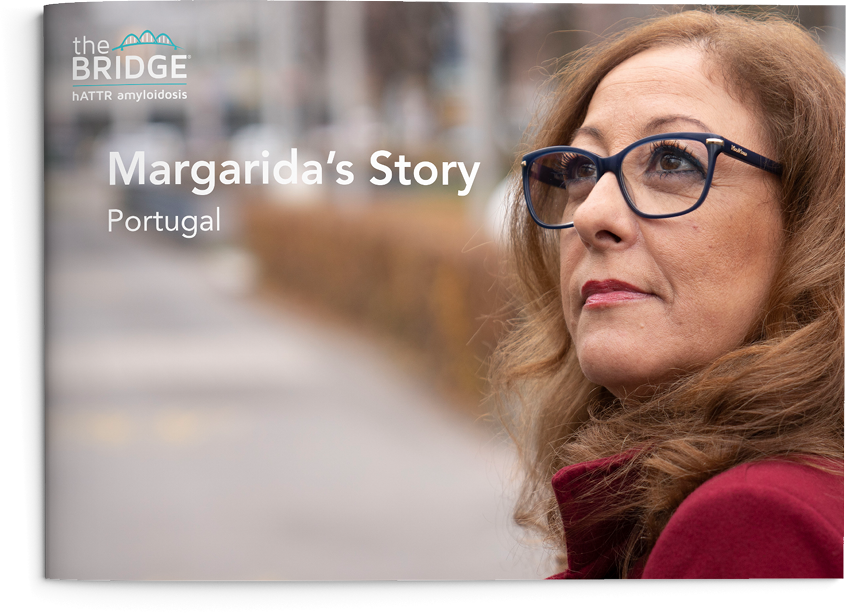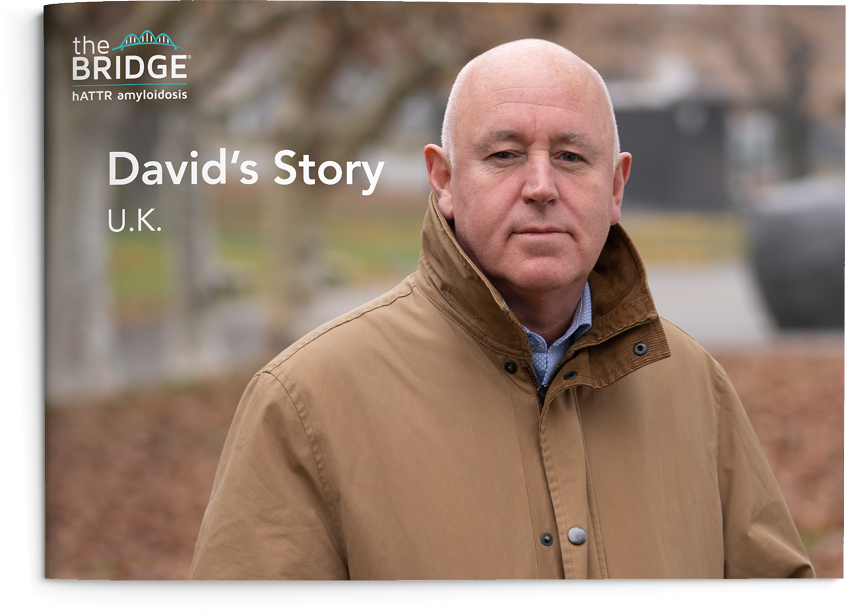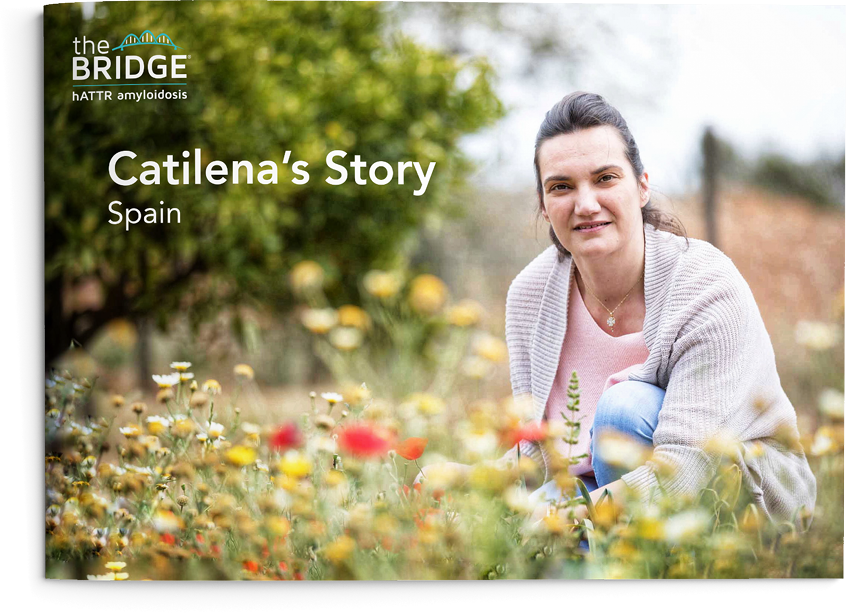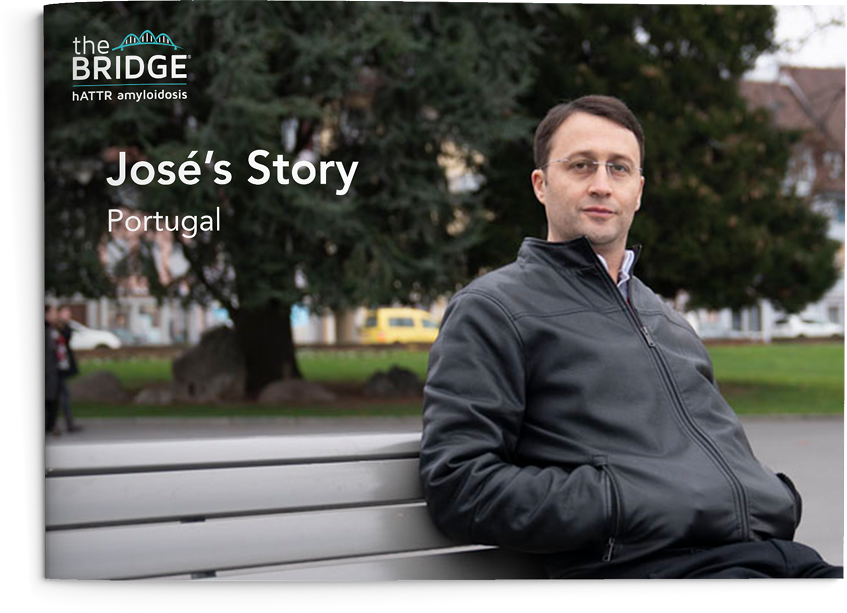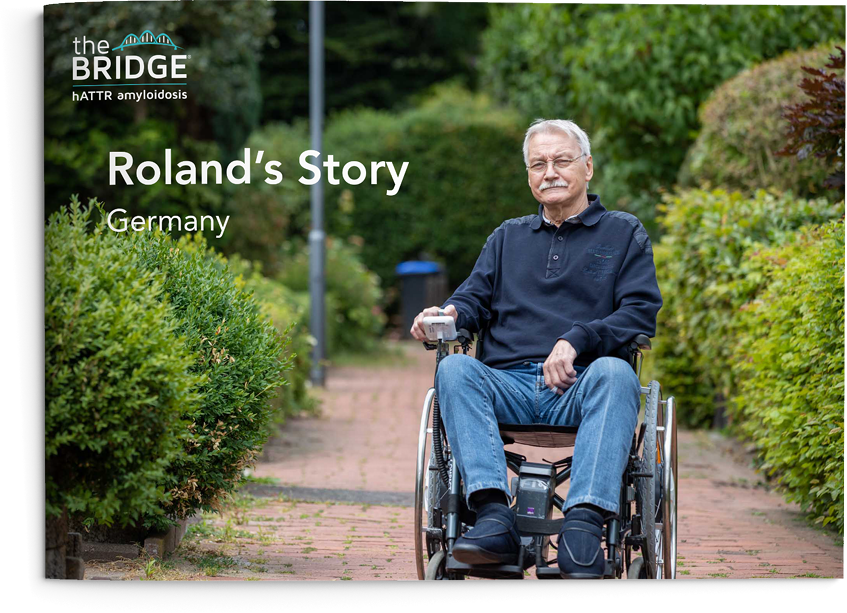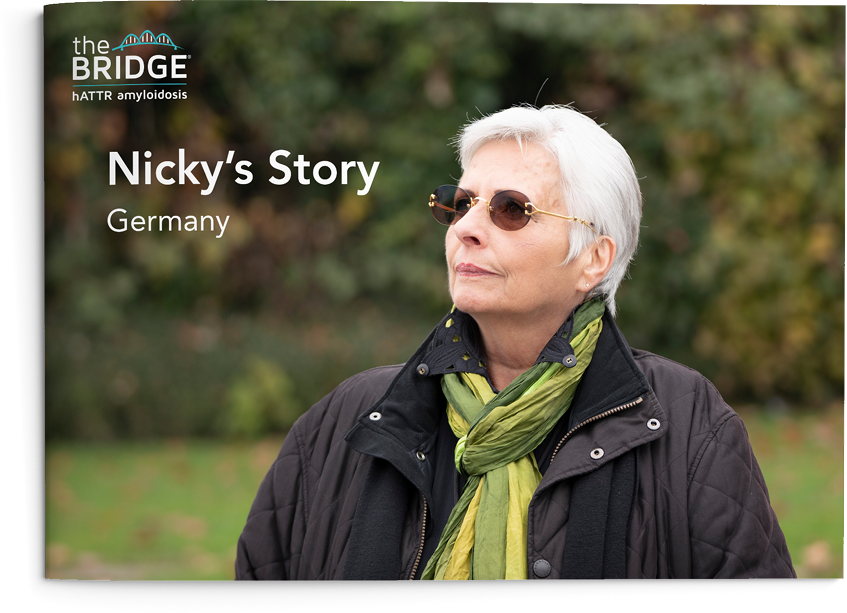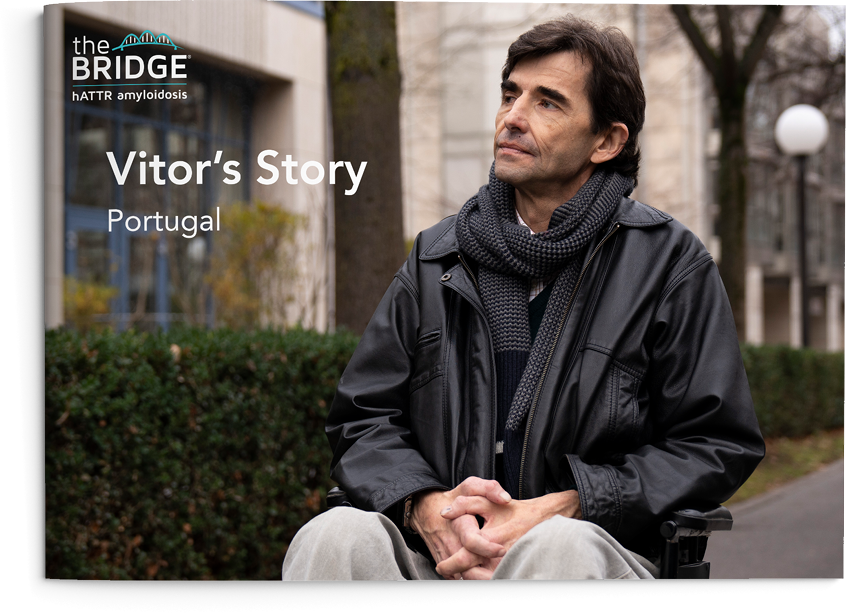Patient Stories
![[Null alt tag - alt=""]](/sites/default/files/2020-02/Vitor.jpg)
My name is Vitor. I would like to thank Alnylam Pharmaceuticals for sponsoring and supporting me to share my story of living with hATTR amyloidosis. Amyloidosis is an inherited gene mutation that deposits amyloid deposits in the tissues.
I was born in Portugal on the same birthdate as my father. As it turned out, this would not be the only unique event we would share as father and son.
Early in my childhood, our family emigrated to Toronto, Canada, to find better opportunities and a better life. I still remember landing at the airport in Toronto. It was the first time I saw metres of beautiful, fluffy white snow! When you’re eight years old and fresh from the farm, that is the kind of view you simply don’t forget.
But not long after moving to Toronto, my father began to get sick and lost his job. To help make ends meet, my mother worked two jobs. When she returned from working, she would tend to my father. She didn’t have much energy for the three of us boys.
All the while my father was getting worse and worse. He was thin, and he’d lost the strength and sensitivity in his hands. None of us understood what was happening. Doctors thought it might have something to do with his liver.
As my family from Portugal suspected that it could be amyloidosis, my parents decided to return to Portugal. With that move, my father could be seen by doctors who were now more familiar with amyloidosis and we could be closer to family for support. I travelled with them hoping to be of help. Ultimately, my father was tested and diagnosed with amyloidosis, an incurable and hereditary disease. Not content with the diagnosis, I sought out others with the same diagnosis. There were many in this town of Portugal. It was the first time I’d met other people with amyloidosis. I realized my father was not alone in his suffering but still never appreciated that this was an illness that me and my brothers should be very concerned about.
Even with our hope of finding my father help, he passed away in my arms at age 41. He was a strong man in my youth and a great presence in my life; I still miss him today. After his funeral, we returned to Toronto and life went on as usual, as much as it could.
It was around this time when I began to feel strange changes in my body. My ankles were weak, and I had numbness in my toes. I felt like I was walking like a duck as my feet flopped. I was also losing weight and strength. I made excuses for my inability to lift or move things. I was only in my 20s! I wasn’t ready to face what was starting to happen to me yet.
I got married and divorced, and I decided it was time to take better control of myself. More doctors. More exams. Ultimately, a biopsy on a nerve in my right ankle delivered the diagnosis I was very familiar with: amyloidosis. I already knew in my heart my results would be positive. I also already knew what the doctor told me: no known cures, no known treatments. I was numb. I had inherited the condition that had killed my father, and I was only in my mid-20s.
Realizing the full impact this might have on my brothers, my youngest brother, George, got tested, too. My oldest brother did not. George received the same diagnosis. We could have sunk into a pity party for what the future held, but we were young! What the heck? We packed up everything we owned and moved to Brazil for two years. We took trips and joked about what was happening to our bodies. When you have someone to share this disease with, there’s much less judgment.
For instance, the first and only time I drank fresh coconut milk from an actual coconut, he and I shared a real close experience. As soon as I cracked open the coconut and drank the sweet milk, I had to go, and I mean go—right now! I told my brother, George, to pull over right away…it was too late. The moment to avoid embarrassment had passed. We laughed hysterically about it then, and it still makes me laugh now.
When my mother contacted us about how liver transplants were showing real progress slowing down the progression of amyloidosis, we both returned to Portugal. George was quickly accepted into the transplant programme, but due to my advanced stage, the doctors decided it was too late for me to be transplanted. After his transplant, George had real hope in his eyes, and I knew I couldn’t give up on getting my transplant. I found it in Toronto and flew back to wait for my new liver.
I got “the call” two weeks after registering. When the hospital called with a donor liver, I thought it was a joke. I told them, “I wasn’t home.” They quickly explained this was for real, to prepare a bag and be at the hospital that night. This was no joke. This was real. I panicked. I had to get to the hospital. My sister-in-law got me in the car but had to pull over so I could throw up.
On July 14, 1996, at 8:30 a.m., I was transplanted, by the grace of God. My new liver was from a race car driver who had passed away that evening, and my liver was donated to a recipient, too. Not everyone realizes that the livers of those who have amyloidosis can still be donated. I was the first live liver donor in Toronto, and my liver helped a woman for more than 20 years!
I spent months recovering at my older brother’s home where he and his wife helped me. Initially, I regretted getting transplanted. I was so depressed. Although the transplant went well, I was so swollen, I couldn’t walk. I was constantly soiling myself. My recovery was very difficult and long. If it hadn’t been for my sister-in-law and brother, I may not have recovered at all. But as soon as I could travel, I returned to Portugal. After years of caring for my father, my mother helped me continue my recovery.
It wasn’t easy. I experienced chronic nausea and diarrhoea. It’s hard to connect with friends when you’re having problems controlling your bowels. Either I’d lose control of myself, or I’d think I was going to lose control of myself. It was all I’d think about to avoid the problem. I stayed around the house. I lived like this for years until I met my “Mother Theresa.” Her real name was Maria Dinis. She was a sweet, older lady whose family was familiar with amyloidosis and knew what I was going through.
Maria encouraged me to get out and do some volunteering work. She pointed out there were needier people than me. I began doing voluntary work for the nucleus of the cities of Vila do Conde and Povoa de Varzim. I accepted this as a challenge. I had a reason to get out of the house and live again. And through Maria, I met a woman who would change my life forever.
I remember the night…Maria and I were driving when we passed a beautiful woman pushing her husband in a wheelchair. Maria knew them and insisted we stop. She introduced me to Guida and her husband, Victor, who was also suffering from amyloidosis. I wouldn’t know it at the time, but we had just given help to my future wife. It would be only six months later, after Guida’s husband had passed away, that we would meet again. She was a widow, and I was single. We started out as friends, but as time passed, we spent more and more time together. We went to coffee shops, out to dinner, had fun with mutual friends.
It wasn’t long until I knew we had a deeper connection, but before we could go any further, I needed to ask her one question: Are you sure you want to go through this illness again? I told her not to be stupid. She was young, active, and attractive. I wanted to make sure she was making the right decision for herself, too. After all, we both knew what the future would hold. She said, “Yes.”
Guida and I have been together for 13 years. She is my caregiver and my soulmate. She has been there for me through the good days and the very bad. When I’m frustrated with nausea every morning, she’s there to help me feel better. When I’m depressed about losing muscle mass, she encourages me to do my physio three times a week. Guida has nothing but faith in what I can do and is there to help me.
I like to be independent. I don’t like to rely on her or anyone else. I know what I put her through and probably don’t always tell her how much I appreciate her. But it isn’t always easy to express that to someone who helps you to toilet and cleans you up.
Guida and I make the most out of our life. We take trips. We eat at restaurants that we love. We drive into the hills. We still go to the association where we met. At medical appointments, Guida is there making certain I hear everything they say, and then that I do everything they say. My doctors treat us both more like family members than patient and caregiver. They really pay attention and listen to both of us.
My only regret is that Guida and I didn’t have children. With the knowledge of how this disease manifests itself from one generation to the next, it was the only decision for us. We were approved to try artificial insemination, but that was not successful.
This condition can have a dramatic impact on the physical relationships between a man and woman. Men struggle with erectile dysfunction. Intimacy is important to Guida and me, and we’ve found ways to continue to nurture this closeness.
God chose to give me a second chance for life through my successful transplant. I’ve chosen to make my days matter by working with my association and sharing my story with anyone who will listen.
Thank you.
